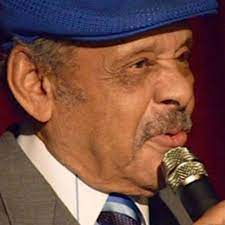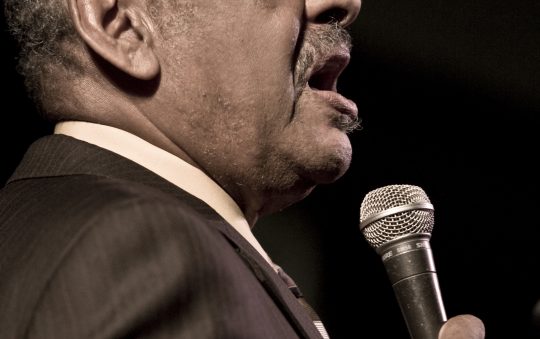
Ernie Andrews created American history as a rhythm and blues vocalist in the 1940s and continued to draw massive crowds through the twenty-first century. This year on Monday, February 21, the world learned of his death; Andrews was 94 years old. However, his legacy lives through his music and contribution to the growth of Jazz.
Ernest Mitchell Andrews Jr. was born on December 25, 1927, in Philadelphia. He began his singing career in the church. When he was 13, Andrews moved to Jeanerette, Louisiana, to live with relatives on his mother’s side.
Attending school Andrews was drawn to the band, the lead instructor was the Iconic New Orleans Trumpeter, Bunk Johnson. under Johnson’s tutelage, Andrews participated in band as a drummer.
His family migrated to Los Angeles where he found himself singing in the choir at church. His talents grew in high school. While he attended Jefferson High School, Andrews landed a few hit singles under the G&G label.

Upon winning an amateur show, Andrews captured the attention of music producer Joe Greene. Andrews was brought into the studio at the age of 17 and recorded his first hit record, “Soothe Me,” (1945). Although there were some Billboard issues, the record sold 300,000 copies.
Andrews was inspired by the greats, including Billy Eckstine and Al Hibbler. As he tried to break into his own style of music, Andrews was often compared to Joe Williams. As a well-rounded musician, Andrews collaborated with the Harry James Orchestra and juggled many elite gigs in the 1940s. Throughout his long and successful career, Andrews handled polarizing views of fame and being frequently overlooked.
Andrews was a constant presence at clubs on Central Avenue, the heart of Los Angeles, during the swing of the jazz scene. He was discovered at the famed Lincoln Theatre.

In an interview with LAist newsroom’s public affairs show, (Air Talk, 2008), he discussed his escapades in L.A.
LAist captured him stating, “Everything that I sing is about life, you know, it’s about what I’ve lived in my life and that makes it honest, I just don’t sing songs to be singing songs, I sing songs that I’ve lived, and it makes it honest.”
The jazz singer gained more of an audience when he spent time in Baltimore, Maryland. From there, he worked the East Coast and the great plains of the Midwest, having scored big with his pop record “Bridge Over Troubled Waters, ” (1971). He later moved back in L.A. and settled down with his wife of 50 years. His Wife Delores passed in 1997.
On Monday, February 21, Andrews was at a hospital in Conroe, Texas, battling complications from a blood clot that developed after breaking his hip in a fall, according to close relatives. Everyone learned later that evening that he passed away.
He is survived by four of their five children: Stephanie Williams, Dueal Ernie Andrews, Mark Anthony Andrews, and Daryl Mitchell Andrews; Dana Dee John, their son who passed away in 2013. He is also survived by 12 grandchildren, 22 great-grandchildren, and seven great-great-grandchildren. Andrews’ music and contributions to the expansion of jazz continue to carry on his place in history.






